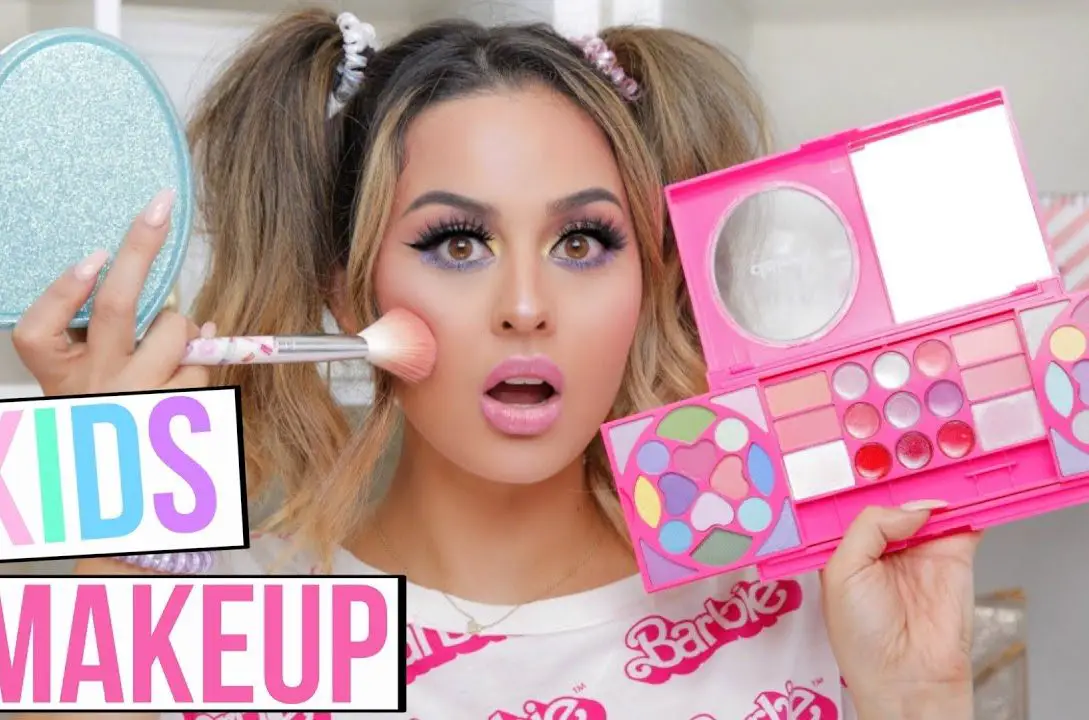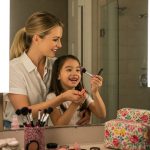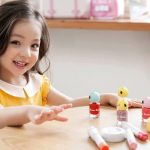The world of makeup, which is once exclusive to adults, is increasingly captivating young minds. From playful dress-up sessions to elaborate social media trends, children are being exposed to cosmetics at a younger age.
This raises a critical question: how do we approach makeup grooming for kids responsibly?
This comprehensive guide will walk you through the variation of this topic, exploring safe practices, age-appropriate applications, and the importance of further healthy self-esteem.
Why Female Kids Love To Makeup
Before addressing the “how,” it’s important to understand the “why.”
Children are naturally curious and love to imitate adults. Makeup, with its transformative power and vibrant colors, offers a playground for creativity and self-expression. Here are some of the reasons:
- Imitation and Role-Playing: Kids see adults applying makeup and want to emulate them. It’s a form of role-playing, similar to dressing up as a superhero or a princess.
- Creative Expression: Makeup allows children to explore their artistic side. They can experiment with colors, textures, and styles, fostering their imagination.
- Social Influence: Social media and online platforms expose children to makeup tutorials and trends, creating a desire to participate.
- Self-Exploration: For some children, makeup can be a tool for self-discovery and exploring their identity.
How To Safely Choose Makeup Products For Kid
When introducing makeup to children, safety is paramount. Their skin is more delicate and sensitive than adults’, making it crucial to choose products specifically formulated for kids.
- Look for “Kids’ Makeup” Labels: These products are typically hypoallergenic, non-toxic, and free from harsh chemicals.
- Check the Ingredients: Avoid products containing parabens, phthalates, fragrances, and other potentially irritating substances.
- Water-Based and Washable: Opt for water-based makeup that’s easy to remove with soap and water.
- Hypoallergenic and Non-Comedogenic: These labels indicate that the product is less likely to cause allergies or clog pores.
- Patch Test: Before applying any new product, conduct a patch test on a small area of skin to check for adverse reactions.
- Avoid Glitter Around Eyes: Glitter particles can irritate the eyes and cause damage. If glitter is used, it should be a cosmetic grade glitter, and kept away from the eyes.
- Check Expiration Dates: Expired makeup can harbor bacteria and cause skin infections.
List Of Age-Appropriate Makeup
There’s no one-size-fits-all answer to when kids should start wearing makeup. It depends on the child’s maturity, interests, and the context.
- Preschool and Early Elementary (3-7 years): Focus on playful, occasional use. Simple face paints, lip gloss, and light blush are suitable for dress-up or special occasions.
- Late Elementary and Pre-Teen (8-12 years): Introduce basic makeup skills, such as applying lip balm, light mascara, and tinted moisturizer. Emphasize natural looks and skincare routines.
- Teenagers (13+ years): Allow for more experimentation with makeup, while still encouraging healthy skincare habits and moderation.
How To Apply Makeup Correctly For Kids:
Guiding children on how to apply makeup correctly is essential for both safety and aesthetic purposes.
- Clean Hands and Face: Always start with clean hands and a clean face to prevent the spread of bacteria.
- Light Application: Emphasize the importance of applying makeup lightly and blending it well.
- Gentle Removal: Teach children how to remove makeup gently with soap and water or a mild cleanser.
- Avoid Sharing Makeup: Sharing makeup can spread infections.
- Skincare Routine: Start teaching a simple skincare routine early on, including cleansing, moisturizing, and sunscreen.
How To Groom Kids For Makeup
The most critical aspect of makeup grooming for kids is stimulating a healthy sense of self-esteem that’s not solely reliant on appearance.
- Focus on Inner Beauty: Emphasize the importance of character, kindness, and intelligence over physical appearance.
- Positive Body Image: Encourage a positive body image and celebrate diversity in beauty.
- Makeup as an Expression, Not a Mask: Frame makeup as a tool for creative expression and fun, not a way to hide imperfections.
- Limit Screen Time: Excessive exposure to social media and unrealistic beauty standards can negatively impact self-esteem.
- Open Communication: Create an open and honest dialogue about beauty, body image, and the influence of media.
Potential Risks and Misconceptions On Kids Makeup
It’s natural for parents to have concerns about children wearing makeup. Addressing these concerns openly and honestly is crucial.
- Premature Sexualization: Some parents worry that makeup can prematurely sexualize children. It’s essential to emphasize that makeup is a form of self-expression and creativity, not a tool for attracting attention.
- Skin Irritation and Allergies: Choosing safe, hypoallergenic products and conducting patch tests can minimize the risk of skin irritation and allergies.
- Dependence on Makeup: Emphasize that makeup is not necessary for feeling beautiful or confident. Focus on building self-esteem from within.
- Cost and Environmental Impact: Discuss the cost of makeup and the environmental impact of packaging and production. Encourage sustainable practices, such as choosing refillable products and minimizing waste.
How To Makeup for Special Occasions
Makeup can be a fun way to add a touch of sparkle to special occasions, such as birthday parties, school plays, or holiday celebrations.
- Themed Makeup: Match makeup to the theme of the occasion, such as glittery eyeshadow for a princess party or face paint for a superhero event.
- Professional Makeup Artists: Consider hiring a professional makeup artist for special events, especially for younger children.
- Keep it Simple: Even for special occasions, keep makeup light and age-appropriate.
How To Identify The Influence of Social Media Trends
Social media plays a significant role in shaping children’s perceptions of beauty and makeup.
- Media Literacy: Teach children how to critically evaluate online content and recognize unrealistic beauty standards.
- Follow Positive Influencers: Encourage children to follow makeup artists and influencers who promote healthy self-esteem and realistic beauty standards.
- Limit Exposure to Filters and Editing: Discuss the use of filters and editing in online photos and videos, and how they can create unrealistic expectations.
- Parental Monitoring: Monitor children’s social media activity and engage in conversations about the content they’re consuming.
DIY Makeup For Kids
Making homemade makeup can be a fun and educational activity for children.
- Natural Ingredients: Use natural ingredients, such as beet juice for blush, cocoa powder for bronzer, and coconut oil for lip balm.
- Supervised Activity: Always supervise children when making homemade makeup.
- Research Recipes: Research safe and effective recipes online or in books.
How To Set Positive Example
Parents and guardians play a crucial role in shaping children’s attitudes towards makeup and beauty.
- Lead by Example: Demonstrate healthy makeup habits and a positive body image.
- Open Communication: Create an open and honest dialogue about beauty, self-esteem, and the influence of media.
- Encourage Self-Expression: Support children’s creative expression and allow them to explore their personal style.
- Focus on Inner Beauty: Emphasize the importance of character, kindness, and intelligence over physical appearance.
In Conclusion:
Makeup grooming for kids can be a positive and empowering experience when approached responsibly. When prioritizing safety, promoting healthy self-esteem, and encourage open communication, parents and guardians can guide children on a journey of creative expression and self-discovery. Remember, makeup is a tool, not a crutch. The most important thing is to help children develop a strong sense of self-worth that’s rooted in their inner beauty and unique qualities.



